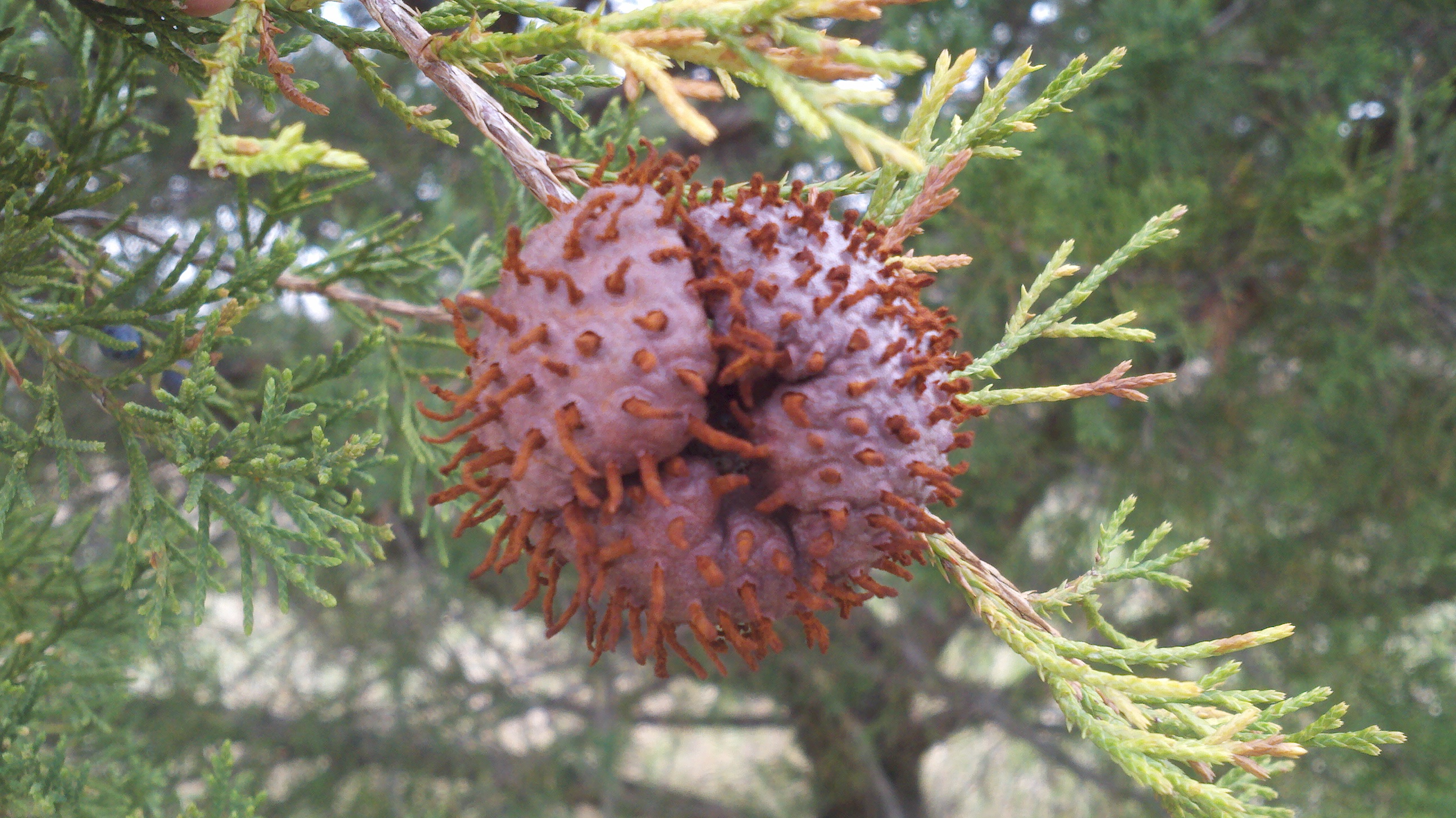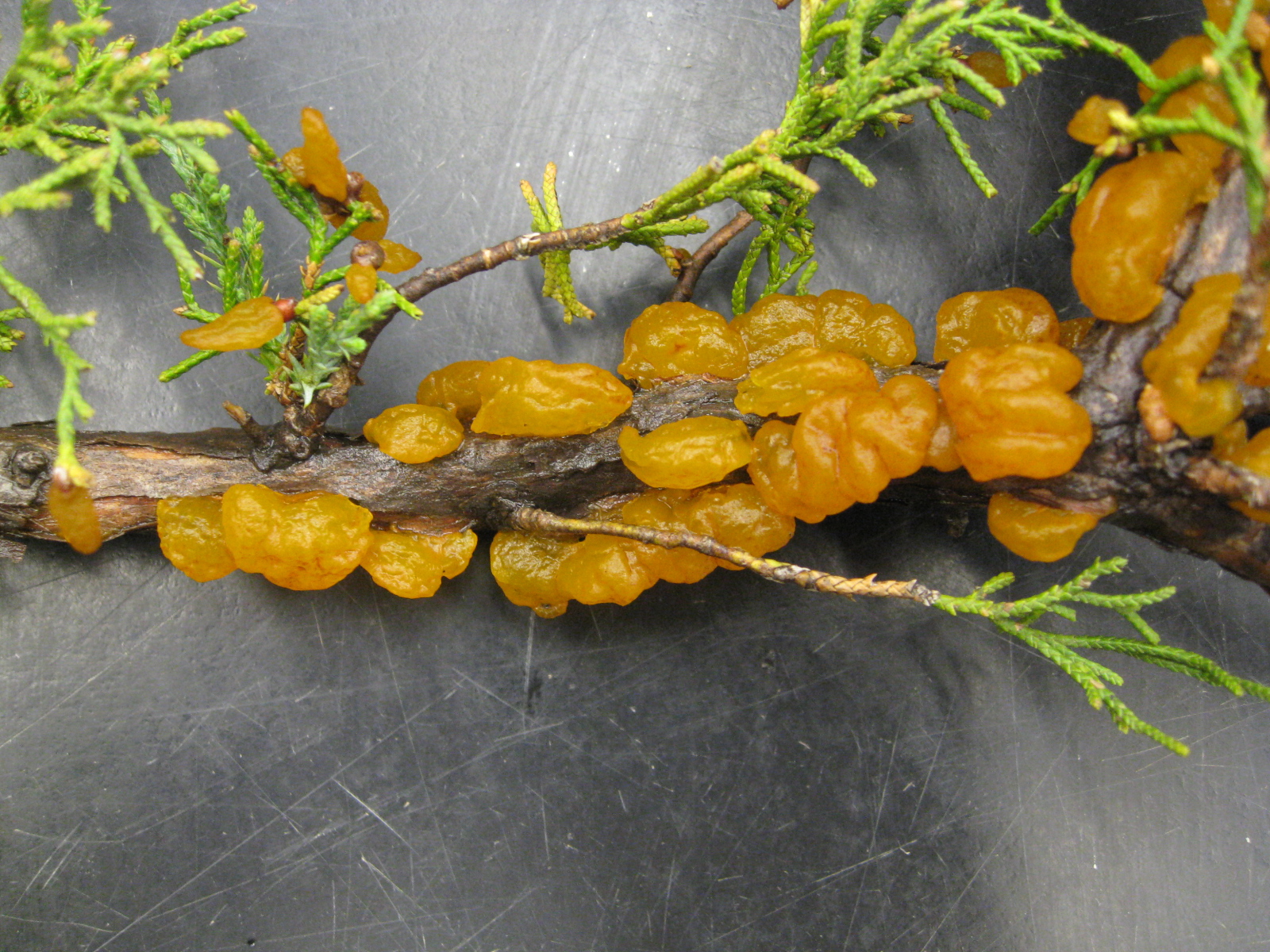(Megan Kennelly, KSU Plant Pathology)
The birds are singing, the tulips are blooming, and junipers (also called red cedars) are “blooming” in another fashion. Cedar apple rust is here. The pathogen (a fungus) spends part of its life cycle on a juniper tree, and the other part of its life cycle on apples, crabapples, hawthorns, or quince. To simplify, we’ll just call them “apple hosts.”



Those jelly-like orange masses on the junipers produce spores that infect the apple hosts. Once infection occurs, leaf spots on apple leaves develop in 1-3 weeks. Eventually, fungal spores are produced in these leaf spots on the apple tissues. The spores are spread by wind and rain back to junipers starting in about July. Without both hosts, the fungus can’t complete its life cycle.
The disease looks dramatic on junipers, but it does not cause any harm. The rusts can cause problems in the apple host, however. If infection is severe, many leaves drop off early and the tree is weakened due to reduced photosynthesis. If your tree only gets a small amount of rust each year, it probably won’t be an issue for long term tree health.
Management options (for apple hosts):
1) Resistance: For new plantings of fruiting or flowering apples, consider planting a rust-resistant variety. Information on crabapple cultivars is available at:
https://bookstore.ksre.ksu.edu/pubs/MF875.pdf
2) Tree care: For any apple tree, proper pruning will allow air movement through the canopy. This practice reduces the leaf wetness that promotes disease. Maintaining overall tree health will also help prevent the disease.
3) Fungicides: Homeowners with a bad history of this disease (severe defoliation), might consider preventative fungicide sprays on the apple hosts when leaves are out and the orange galls are active. For best control, applications should continue through May or as long as the orange galls are active. Products with the active ingredients myclobutanil or propiconazole are examples of materials labeled for cedar apple rust management in flowering crabapples and non-fruiting apples. Make sure you check the label carefully. For example, if you are talking about fruiting apples instead of flowering crabapples, some products are not allowed.
Commercial fruit growers should consult the Midwest Fruit Pest Management guide: https://ag.purdue.edu/hla/hort/documents/id-465.pdf
There is also a video on rust diseases at: https://www.youtube.com/watch?v=yQdwSPtvhH8 The video is 15 minutes long and describes the life cycle and biology of these fascinating fungi!
